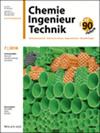Impact of the P-Ligand Concentration on the Formation of Hydroformylation Catalysts: An in situ FTIR Spectroscopic Study
IF 1.5
4区 工程技术
Q3 ENGINEERING, CHEMICAL
引用次数: 0
Abstract
The formation of hydrido rhodium(I) complexes of the type [HRh(CO)3L] and [HRh(CO)2L2] from [Rh(acac)(CO)2]/L (L: bulky monophosphite ligand) requires a ligand-to-rhodium ratio [L]/[Rh] > 10 to prevent the possible partial generation of [Rh6(CO)16] under typical hydroformylation conditions. Significant fractions of formed [Rh6(CO)16] at lower ratios of [L]/[Rh] can be reactivated towards the hydrido complexes after the addition of the monophosphite ligand in the presence of synthesis gas. It was also found that [Rh6(CO)16] can be transformed by treatment with an excess of monophosphite ligand under inert gas to form a mononuclear complex of the type [L`Rh(CO)L] with an ortho-metallated ligand.

P 配体浓度对加氢甲酰化催化剂形成的影响:原位傅立叶变换红外光谱研究
由[Rh(acac)(CO)2]/L(L:笨重的单磷酸配体)形成[HRh(CO)3L]和[HRh(CO)2L2]类型的氢化物铑(I)配合物需要配体与铑的比率[L]/[Rh]> 10,以防止在典型的氢甲酰化条件下可能部分生成[Rh6(CO)16]。在合成气存在下,加入亚磷酸单配体后,[L]/[Rh]比率较低时形成的[Rh6(CO)16]中的大量馏分可重新活化为氢化物配合物。研究还发现,[Rh6(CO)16] 可以通过在惰性气体中加入过量的亚磷酸单配体进行转化,形成具有正金属配体的[L`Rh(CO)L]型单核络合物。
本文章由计算机程序翻译,如有差异,请以英文原文为准。
求助全文
约1分钟内获得全文
求助全文
来源期刊

Chemie Ingenieur Technik
工程技术-工程:化工
CiteScore
3.40
自引率
15.80%
发文量
601
审稿时长
3-6 weeks
期刊介绍:
Die Chemie Ingenieur Technik ist die wohl angesehenste deutschsprachige Zeitschrift für Verfahrensingenieure, technische Chemiker, Apparatebauer und Biotechnologen. Als Fachorgan von DECHEMA, GDCh und VDI-GVC gilt sie als das unverzichtbare Forum für den Erfahrungsaustausch zwischen Forschern und Anwendern aus Industrie, Forschung und Entwicklung. Wissenschaftlicher Fortschritt und Praxisnähe: Eine Kombination, die es nur in der CIT gibt!
 求助内容:
求助内容: 应助结果提醒方式:
应助结果提醒方式:


